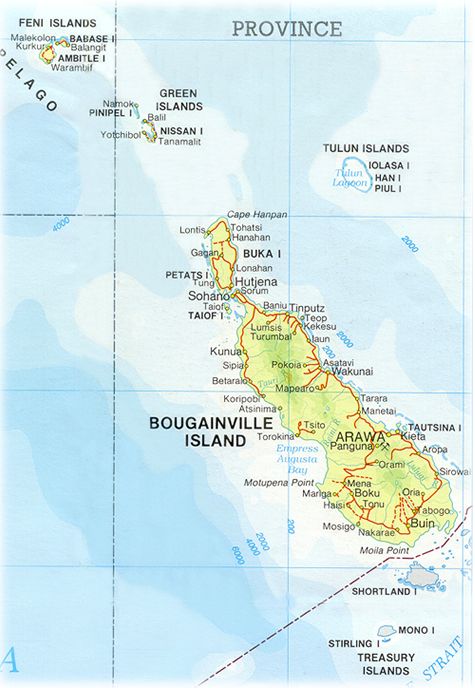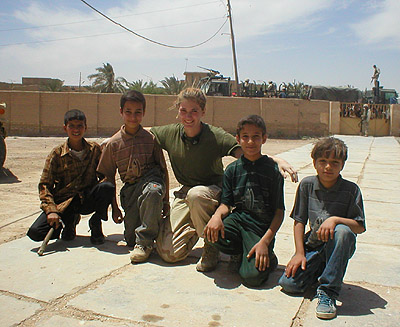|
Posted on 07/27/2005 9:00:37 PM PDT by SAMWolf
|
|
 are acknowledged, affirmed and commemorated.
|

| Our Mission: The FReeper Foxhole is dedicated to Veterans of our Nation's military forces and to others who are affected in their relationships with Veterans. In the FReeper Foxhole, Veterans or their family members should feel free to address their specific circumstances or whatever issues concern them in an atmosphere of peace, understanding, brotherhood and support. The FReeper Foxhole hopes to share with it's readers an open forum where we can learn about and discuss military history, military news and other topics of concern or interest to our readers be they Veteran's, Current Duty or anyone interested in what we have to offer. If the Foxhole makes someone appreciate, even a little, what others have sacrificed for us, then it has accomplished one of it's missions. We hope the Foxhole in some small way helps us to remember and honor those who came before us.
|
|
After months of minor raiding, the U.S. Navy's new aircraft carriers took on a major target when they attacked Japan's key bastion in the Solomons in November 1943.  It was from Rabaul that Japanese warships and aircraft were staged before being hurled south against the advancing Allies. Rabaul in turn was frequently the target of air raids by the U.S. Army's Fifth and Thirteenth air forces, the U.S. Marines, and the Royal Australian and Royal New Zealand air forces. Regardless of the outcome of such attacks, the Allies could almost invariably count on a hot reception from air groups, or kokutais, of Mitsubishi A6M Zeros, flown by the best pilots in the Japanese navy, and from scores of anti-aircraft (AA) positions. By November 1943, however, the constant attrition of fighting over the Solomons was taking its toll on Rabaul's capabilities. And at that point, a new threat appeared. A new generation of U.S. naval aircraft carriers, built to replace those lost in 1942, were ready to join the offensive, manned by sailors and airmen who had been intensely trained by the combat-seasoned survivors of the battles of the Coral Sea, Midway, the eastern Solomons and Santa Cruz.  Joining the surviving carriers Saratoga and Enterprise were new 27,000-ton Essex-class fleet carriers and 11,000-ton Independence-class light carriers. Along with the veteran Grumman TBF-1 Avenger torpedo bombers and Douglas SDB-4 Dauntless dive bombers on their decks were two new aircraft—the Grumman F6F-3 Hellcat fighter and a new dive bomber, the Curtiss SB2C-1 Helldiver.  Grumman F6F-3 Hellcat While his fleet buildup and the Allied advance up the Solomons proceeded, the American commander in chief in the Pacific (CINCPAC), Admiral Chester W. Nimitz, decided on an alternate plan to advance on Japan by seizing strategically selected island groups. The first targets would be Makin and Tarawa in the Gilbert Islands (now Kiribati), but before those invasions commenced, Nimitz sent his new task forces on a series of minor raids. The first occurred on August 31, 1943, when aircraft of Task Force 15.5, built around the carriers Yorktown, Essex and Independence, attacked Marcus Island in the North Pacific. That was followed by strikes against Tarawa and Makin by the carriers Lexington, Princeton and Belleau Wood from September 17 to 19. Wake Island was next, hit by planes from Essex, Yorktown, Lexington, Cowpens, Independence and Belleau Wood on October 5 and 6. The Wake strike saw the first confrontation between carrier-based F6F-3s and A6M2 Zeros—with the Hellcat coming away the victor—and the first successful use of a submarine, Skate, to rescue downed carrier airmen.  SB2C Helldiver The damage inflicted in the raids was hardly crippling to the Japanese, but it gave the U.S. Navy airmen and sailors experience—and even more valuable self-confidence—for the greater campaigns to come. The first major operation for Nimitz's new carriers came not in the Central Pacific, however, but in the Solomons to the southwest. And their first real challenge would come from Rabaul. On November 1, 1943, U.S. Marines landed in Empress Augusta Bay on the island of Bougainville, bringing American forces to the upper region of the Solomons. The Japanese reacted by sending a force of cruisers and destroyers to annihilate the beachhead, but it was intercepted by an American cruiser-destroyer force on the early morning of November 2 and repulsed with the loss of the light cruiser Sendai and the destroyer Hatsukaze.  SBD Dauntless Later that day, 78 Fifth Air Force planes—North American B-25s of the 3rd, 38th and 345th bombardment groups, escorted by Lockheed P-38s from the 39th and 80th fighter squadrons and the 475th Fighter Group—attacked Rabaul and were intercepted by 112 Zeros. Rabaul's air defenses, under the overall command of Rear Adm. Jinichi Kusaka, included three carrier groups that had been dispatched there just the day before, while their ships underwent refit in Japan. The caliber of the pilots was reflected in their performance. Warrant Officer Kazuo Sugino from the carrier Zuikaku's air group was credited with shooting down three enemy planes. Shokaku's carrier group included Warrant Officer Kenji Okabe, famed for scoring seven victories in one day during the Battle of the Coral Sea, but its star in the November 2 air battle was Petty Officer 1st Class (PO1C) Takeo Tanimizu, who scored his first of an eventual 32 victories by downing two P-38s. From light carrier Zuiho, Ensign Yoshio Fukui downed a B-25 but was then himself shot down, possibly by Captain Marion Kirby of the 475th Group's 431st Squadron. Fukui survived with a burned right foot and insisted on returning to action. The loss of nine B-25s and nine P-38s earned the November 2 raid a place in Fifth Air Force annals as "Bloody Tuesday," but the Japanese recorded 18 Zeros destroyed or damaged in addition to bomb damage to Rabaul's ground installations.  Admiral William "Bull" Halsey The Japanese needed a more powerful naval force to destroy the American beachhead. Admiral Mineichi Koga, commander of the Combined Fleet, dispatched Vice Adm. Takeo Kurita's Second Fleet, comprised of the heavy cruisers Takao, Maya, Atago, Suzuya, Mogami, Chikuma and Chokai, the light cruiser Noshiro and four destroyers, from Japan to Rabaul. Chokai and a destroyer had to be detached on November 4 to tow two transports that had been crippled by American air attacks to the northwestern Pacific base at Truk in the Caroline Islands. A Consolidated B-24 spotted the rest of Kurita's fleet off the Admiralty Islands and duly reported 19 ships heading toward the western entrance of St. George's Channel at Rabaul. The Second Fleet's arrival was bad news to Admiral William F. Halsey, commander of U.S. Navy forces in the Southwest Pacific. With most of the U.S. fleet preparing to invade the Gilberts, he did not have one heavy cruiser to oppose Kurita's powerful veterans. He did, however, have a small carrier detachment, Rear Adm. Frederick C. Sherman's Task Force (TF) 38, which had supported the bombardment of Buka and Bonis. The carriers Saratoga and Princeton were fueling from the tanker Kankakee northwest of Rennell Island when Halsey sent them a dispatch on November 4, ordering, "Task Force 38 proceed maximum formation speed [to] launch all-out strike on shipping in Rabaul and north thereof (order of targets: cruisers, destroyers). Retire thereafter...."
|
Quick somebody call PETA to report donkey abuse!
Great pictures.
Ah, Burghoff

Great picture!! Looks just like the one on post #34. ;^)
Proudly posting before reading the thread since...
Darn! I was hoping you'd say something like, "great minds . . ." Oh well, maybe another day . . .
LOL
I was trying to be vaguely original.

Rabaul is about 245 statute miles west by north west from Torokina Point, according to my maps. Can't find a protractor.
Some sources say that the Helldiver was inferior to the earlier SBD, mostly because the fuselage was too short to give the tail section any leverage, it sounds like. Bad design, but not the manufacturer's fault. The machine replaced the SBD even though the users complained that it was inferior.

Thanks for the pictures. They bring home the very personal way war has affected our families and us.
A couple of real party animals.
That's some well, wow. It's a shame all that biblical history was in the hands of the devil.
Hey Sweets . . . how'd ya sleep last night?
We appreciate beauty here at the Foxhole. A couple of my favorites are the ME-109 and the Mosquito, one German, one British and of course I love the Corsair, the P-38, the B-17, LOL. So many of those WWII Warbirds were beauties.
It's not you, it's a Foxhole anomoly, we all do it and were dang proud of the fact that Foxhole folks can still understand what we mean!
Wow, great pictures of your grandad, you know we are thankful for his service and so happy when you share pics with us. :-)
((Hugs))
Disclaimer: Opinions posted on Free Republic are those of the individual posters and do not necessarily represent the opinion of Free Republic or its management. All materials posted herein are protected by copyright law and the exemption for fair use of copyrighted works.